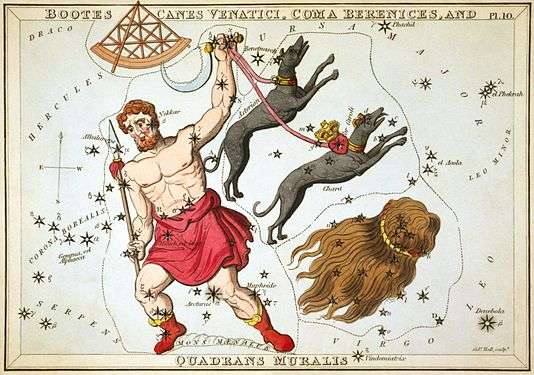Quadrans Muralis

Quadrans Muralis (Latin for mural quadrant) was a constellation created by the French astronomer Jérôme Lalande in 1795. It depicted a wall-mounted quadrant that he and his nephew Michel Lefrançois de Lalande had charted the celestial sphere with.[1] It was located between the constellations of Boötes and Draco, near the tail of Ursa Major,[2] containing stars between Beta Bootis and Eta Ursae Majoris (Alkaid).[3]
Johann Elert Bode converted its name to Latin as Quadrans Muralis and shrunk the constellation a little in his 1801 Uranographia star atlas, to avoid it clashing with other constellations.[1]
It is no longer in use, but the Quadrantid meteor shower is named after it.
The variable star BP Boötis was a member of the constellation.
39 Boötis is a double star that was transferred by Lalande into Quadrans.[4]

References
- 1 2 Ridpath, Ian. "Quadrans Muralis". Star Tales. Self-published. Retrieved 25 March 2016.
- ↑ Ridpath, Ian. "Lalande's Quadrans Muralis". Star Tales. Self-published. Retrieved 25 March 2016.
- ↑ Inglis, Mike; Moore, Patrick (2015). The Observer's Year: 366 Nights of the Universe: 2015 – 2020. New York, New York: Springer. p. 178. ISBN 978-3-31918-678-8.
- ↑ Smyth, William Henry (1844). A Cycle of Celestial Objects: For the Use of Naval, Military, and Private Astronomers. 2. London, United Kingdom: John W. Parker. p. 329.